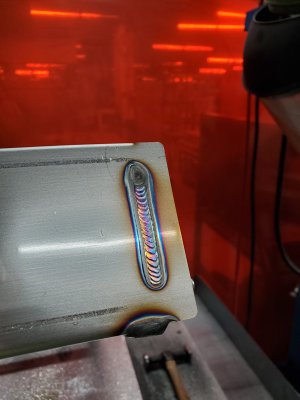- Joined
- Dec 27, 2014
- Messages
- 4,087
I was introduced to TIG, hardfacing with Stellite, took me about 10 mintues to get onto it, only problem I had, my "teacher' was left handed, started me out that way.... I used to get pretty good sunburn triangles where my shirt was open below the mask.

